Tumba del General Kim Yushin (경주 김유신묘)
1.8Km 2024-12-05
Chunghyo 2-gil 44-7, Gyeongju-si, Gyeongsangbuk-do.
La tumba del general Kim Yushin (595-673) está designado como Sitio Histórico. Se localiza en una escénica área llena de pinos en la colina este del monte Songha. Conocido como el héroe de la dinastía Silla, el general Kim Yushin fue el biznieto del rey Guhae, el último rey de la dinastía Gaya Geumgwan, y el hijo de Seo Hyeon, el gran general de la dinastía Silla. Yushin se alisto a los Hwarang (cuerpo de militares jóvenes aristócratas) a los 15 y empezó a soñar maneras para unificar la península de los Tres Reinos. Kim Yushin ganó su apoyo político mediante el establecimiento de una sólida relación con el noble Kim Chunchu y se hizo un nombre por sí mismo a través de su valor en el campo de batalla.
Cuando Kim Chunchu ascendió al trono como el 29º rey de la dinastía Silla (cambiando su nombre por rey Muyeol), Kim Yushin emergió de las filas y fue ascendido finalmente a la posición de Sangdaedeung (en el año 660, séptimo año del rey Muyeol). Kim Yushin, luego pasó a la derrota de Baekje en cooperación con la dinastía Tang, también más adelante la conquista de Goguryeo (año 668). La dinastía Tang, se volvió en contra de Silla tras la caída de Goguryeo, pero fue derrotado por el ejército de Kim Yushin junto con la armada de Goguryeo y Baekje. Con la caída de Tang, Kim Yushin finalmente realizó su sueño y unificó los tres reinos y fue nombrado al más alto puesto del gobierno de Silla en honor de su hazaña heroica.
La tumba del general Kim Yushin es una larga tumba que mide unos 30 metros de diámetro. Los relieves de los 12 dioses del zodiaco orientales (mitad hombre, mitad animal) hacen de guardianes alrededor de la tumba, blandiendo de armas. La tumba es la segunda en grandeza. Lo más importante de Yushin fue la contribución a la unificación de los Tres Reinos.
El camino hacia la tumba es un recorrido que no se puede escapar. Este camino tiene el nombre de Heungmuro, y ha sido seleccionado como uno de los 100 caminos más atractivos de Corea. El camino está lleno de cerezos en primavera y es famoso por ser un gran lugar para pasear o pasar en coche.
Tumbas Reales Oreung de Gyeongju (경주 오릉)
1.8Km 2025-03-19
Geumseong-ro 38-9, Gyeongju-si, Gyeongsangbuk-do
Biblioteca del Milenio de Silla en el Museo Nacional de Gyeongju (국립경주박물관 신라천년서고)
1.8Km 2025-04-29
Inwang-dong 76, Gyeongju-si, Gyeongsangbuk-do
Solar del Templo Hwangnyongsa de Gyeongju (경주 황룡사지)
1.8Km 2025-03-19
Imhae-ro 64-19, Gyeongju-si, Gyeongsangbuk-do.
El solar del templo Hwangnyongsa se ubica en frente del templo Bunhwangsa en Guhang-dong, Gyeongju. Durante la era de Silla, el templo Hwangnyongsa era el más grande de su tipo con el mayor volumen de tesoros budistas del país.
La construcción del templo empezó en el año 553 en unos terrenos cerca del recinto royal de Banwolseong por orden del rey Jinheung. El rey en un principio tenía la idea de construir un palacio, pero terminó decidiendo la construcción del templo, después de recibir noticias que habían visto un dragón amarillo por los alrededores del edificio. Por este motivo fue nombrado Hwangnyongsa (templo del dragón amarillo) y fue terminado en el año 569, 17 años después de su inicio. Los murales del templo cuentan con un viejo árbol de pino dibujado por el artista Solgeo. Durante la era Silla, el templo fue el centro del budismo patrocinado por el Estado.
Más adelante, cuando el monje Jajang estudiaba en China durante la dinastía Tang, se le cruzó un dios mientras pasaba por el estanque Taihe. El dios le dijo: "El dragón amarillo es mi hijo mayor, y es el guardián del templo Hwangnyongsa por órdenes de Brahma, el Creador. Si construyes una pagoda de nueve niveles cuando regreses a Silla, los estados vecinos se someterán y pagarán tributos, y la causa real será más fuerte. Una vez se termine la construcción de la pagoda, prepara una ceremonia en memoria de los dioses locales y perdona a cualquiera de los criminales del país. Si sigues todo lo que te he dicho, ningún otro Estado se atreverá a invadir Silla".
Después de este encuentro, Jajang regresó a Silla y convenció a la reina Seondeok para que construyera la pagoda de nueve niveles. El arquitecto Abiji del estado vecino de Baekje diseñó la pagoda y el proyecto fue concretado por Yongchun y sus 200 hombres usando madera y piedra. La noche anterior a que las columnas fueran erigidas, el arquitecto Abiji soñó con la caída de Baekje y rechazó terminar el proyecto. Un viejo monje y un hombre con mucha fuerza aparecieron por sorpresa del salón principal del templo, erigieron las columnas y desaparecieron majestuosamente. Abiji estaba tan soprendido al verlo que aceptó que su país desapareciera como un destino de los dioses, y empezó de nuevo el trabajo en el templo (Samgungnyusa, Memorias de los Tres Reinos).
A 23 años de la finalización de la pagoda, la reina Seondeok, unificó los Tres Reinos; más tarde, numerosos sabios reconocieron la pagoda como un factor contribuyente en la unificación. De los tres tesoros de Silla (la estatua Jangyukjonsang, la pagoda de nueve pisos del templo de Hwangnyongsa, y el Cinturón del Rey Celestial Jinpyeong), dos se encontraban en el templo Hwangnyongsa. La campana más grande de Silla también se encontraba en Hwangnyongsa, pero fue quitada durante la invasión mongola. Los mayores monjes de Silla predicaron en el templo, y muchos reyes iban a escuchar las enseñanzas budistas.
Durante las excavaciones de julio de 1969, se encontraron enormes piedras angulares del salón del sermón, el auditorio y la pagoda. Ocho años de excavaciones y estudios arqueológicos revelan la disposición única de los terrenos del templo, que consistía en una pagoda y tres salas; también encontraron más de 40.000 objetos antiguos. Aunque los cimientos y otras estructuras de la base del templo fueron identificadas por las excavaciones, no hay indicios históricos sobre el diseño superior del templo, por lo que la restauración del templo en su totalidad es prácticamente imposible. La dimensión del templo, en base a los hallazgos arqueológicos, era de 70 hectáreas, aproximadamente 8 veces mayor que el templo Bulguksa.
Museo Nacional de Gyeongju (국립경주박물관)
1.9Km 2025-03-21
Iljeong-ro 186, Gyeongju-si, Gyeongsangbuk-do.
El Museo Nacional de Gyeongju se caracteriza por su profunda tradición, con una historia de aproximadamente 90 años. Representando a Gyeongju, ciudad que había sido la capital del reino de Silla (57 a.C. - 935 d.C.), es en este museo donde podrá ver la historia cultural de Gyeongju.
El área de exhibición está dividida en cuatro grandes secciones: la Sala Principal, los Anexos I y II, y al aire libre, se halla el Área Descubierta de Exhibición (Predio del Museo). En la Sala Principal, podrá observar cerámicas de barro, y las salas de Artes y Artesanías podrá ver numerosas obras artísticas y trabajos artesanales. La Sala Memorial Gugeun tiene en exhibición 666 reliquias que fueron donadas por Lee Yang-Seon de su colección personal para su preservación. Los restos de reliquias excavadas de las grandes tumbas que se hallaban en la ciudad de Gyeongju se encuentran exhibidas en el Anexo I, o la Galería Gobun. Entre ellos, hay adornos magníficos tales como coronas de oro, coronas ornamentales, cintos y aretes, entre otros. A través de estos artículos podrá vivir la experiencia del sobresaliente nivel artístico del período de Silla. Aproximadamente 30.000 artículos fueron excavados del estanque Wolji, entre los cuales los más significativos se hallan expuestos al público en el Anexo II, o la Galería Wolji. Las demás galerías tienen en exhibición los utensilios del hogar. La gran variedad de clases de ítems ilustra la vida de la corte real durante el período de Silla.
Después de recorrer las galerías, podrá trasladarse al Área Descubierta de Exhibiciones, que la componen los Jardines del Museo. La Campana del Rey Seongdeok colocada aquí es la campana de mayor renombre de los templos budistas. También hay varios artículos de los palacios de la realeza y templos que se hallan exhibidos aquí. Las esculturas budistas decoran la mayoría de los objetos de piedra. Si usted es un viajero interesado en el budismo o la magnificencia de la cultura de los palacios reales, este es un sitio que no deseará perderse.
Campana Divina del Rey Seongdeok (성덕대왕신종)
1.9Km 2021-02-17
Iljeong-ro 186, Gyeongju-si, Gyeongsangbuk-do
+82-54-740-7500
La campana del rey Seongdeok, la más grande de toda Corea actualmente, mide 3,75 metros de alto, y un diámetro de 2,27 metros, y 11-25 centímetros de grosor. En 1997, el Museo Nacional de Gyeongju comprobaron que pesaba 18,9 toneladas. La campana fue hecha para rendir homenaje en memoria del rey Seongdeok. Se terminó en el año 771 y le dieron el nombre de "La Campana Divina del rey Seongdeok". Sin embargo, debido a que la campana se colocó en el templo Bongdeoksa, también se la conocía como la campana de Bongdeoksa. Su otro nombre por la cual es conocida es la Campana Emile, que proviene de una leyenda antigua en la que un niño fue sacrificado para dar sonido a la campana, de los que sus ecos "em-eeh-leh", se parecen a la palabra coreana tradicional para "mamá".
El sonido tubular del tubo en la parte superior de la campana que ayuda a que el sonido resuene es una característica única que se puede encontrar sólo en las campanas de Corea. El yongnyu, que servía como bucle para colgar la campana, fue decorado para parecerse a la cabeza de un dragón. Se puede encontrar una banda de arabescos en el hombro, y en el punto de la campana se aprecia la forma de una flor de loto. El magnífico diseño y los métodos de inscripción usados en la campana ejemplifican el gran arte de los artistas de la época de Silla unificada. La campana también tiene inscritos más de mil caracteres chinos, y su belleza y integridad han sido preservados cuidadosamente a pesar del paso de más de 1.300 años.
Templo Bunhwangsa (분황사)
2.1Km 2021-01-21
Bunhwang-ro 94-11, Gyeongju-si, Gyeongsangbuk-do.
+82-54-742-9922
El templo Bunhwangsa fue construido durante en el año 634, durante el tercer año de reinado de la Reina Seondeok, 27ª monarca de la Dinastía Silla. Los prominentes monjes budistas Wonhyo y Jajang residieron en este templo.
Al tener una larga historia, este templo albergaba muchas reliquias históricas, pero la mayoría se han perdido debido a las invasiones mongolas y japonesas. Se conservan la Torre de Piedra Mojeon, Hwajaengguksabibu (piedra memorial de Wonhyo, renombrado monje budista de la dinastía Silla), Samnyongbyeoneojeong (manantial en el que según una leyenda residían los tres dragones que protegían el Reino de Silla), y los pilares Danggan.
La Torre de Piedra Mojeon, registrada como Tesoro Nacional N° 30, alcanza una altura de 9,3 metros, y fue construida usando bloques de andesita. Aunque se piensa que la torre tenía 7 o 9 niveles, hoy en día se conservan tan solo 3. Los pilares Danggan, dos pilares de piedra de 3,6 metros de altura, están situados en la entrada del templo. Danggan se refiere a los mástiles hechos de madera, metal o piedra, que se usaban para colgar las banderas que indicaban los festivales budistas para que se enterasen incluso las personas que vivían lejos. Los pilares están soportados por tortugas de piedra, una característica poco común. También hay estatuas de Buda que se exponen en el Museo Nacional de Gyeongju y que fueron encontradas en un pozo situado 30 metros al norte del muro posterior del templo Bunhwangsa.
Huewon (경주휴원)
2.2Km 2025-06-04
154, Chunghyoseoak-gil, Gyeongju-si, Gyeongsangbuk-do
Parque Hwangseong (황성공원)
2.3Km 2025-05-27
Yongdam-ro 79-41, Gyeongju-si, Gyeongsangbuk-do
Tumba del Rey Muyeol y Estela del Rey Taejong Muyeol (경주 무열왕릉, 태종무열왕릉비)
2.5Km 2025-05-23
Neungnam-gil 10-4, Gyeongju-si, Gyeongsangbuk-do
La tumba real del rey Muyeol es de Kim Chun-chu, quien subió al trono como 29º gobernante del Reino de Silla. Este rey intentó unificar los tres reinos aliando fuerzas con la dinastía Tang de China, pero falleció antes de que pudiera lograr su objetivo con éxito. Al este de la tumba, se encuentran los restos de su estela con una inscripción que dice: “Taejong Muyeol Daewangjibi (lápida del Gran Rey Muyeol)”.
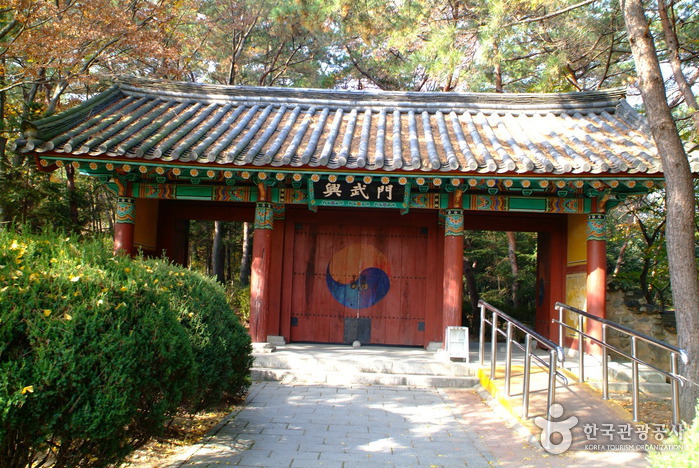
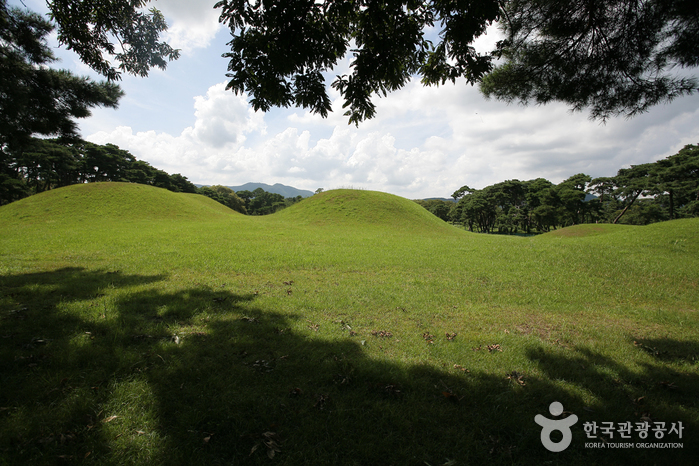
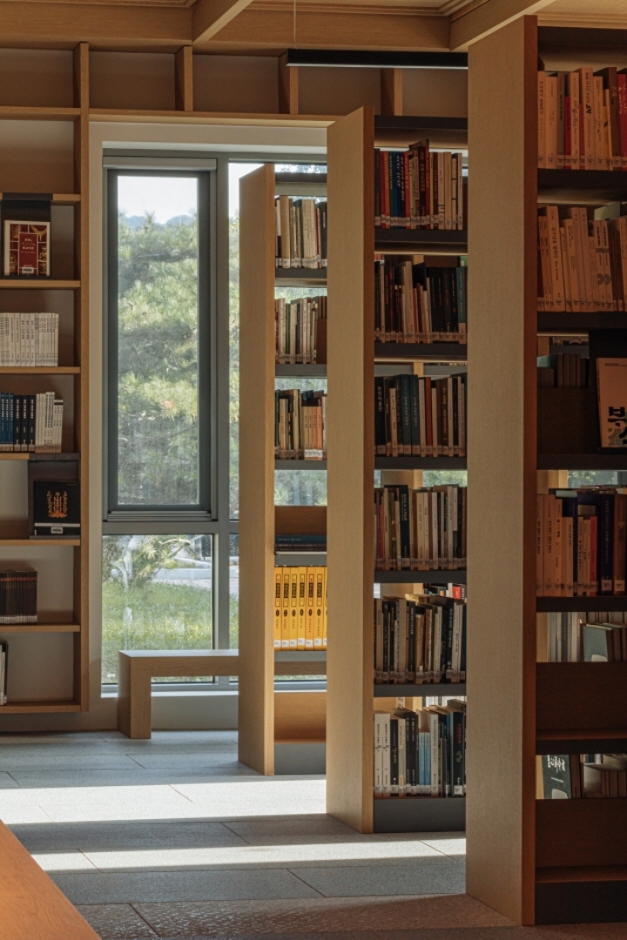
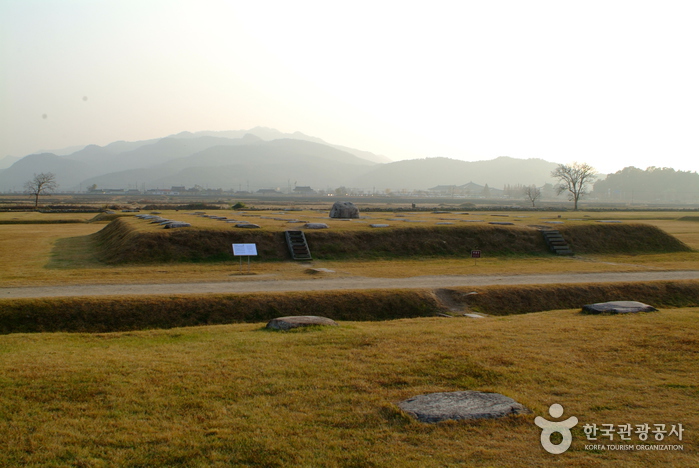

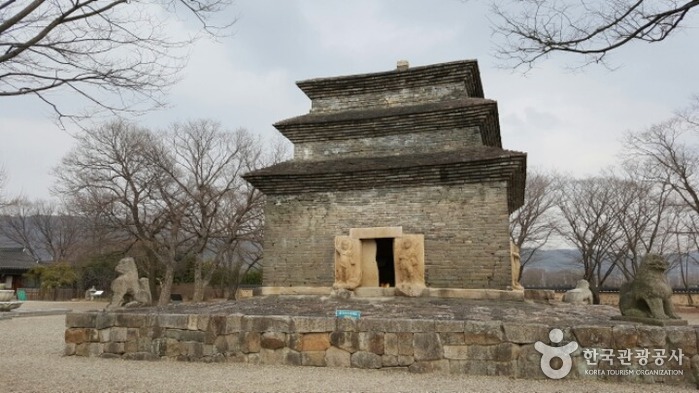
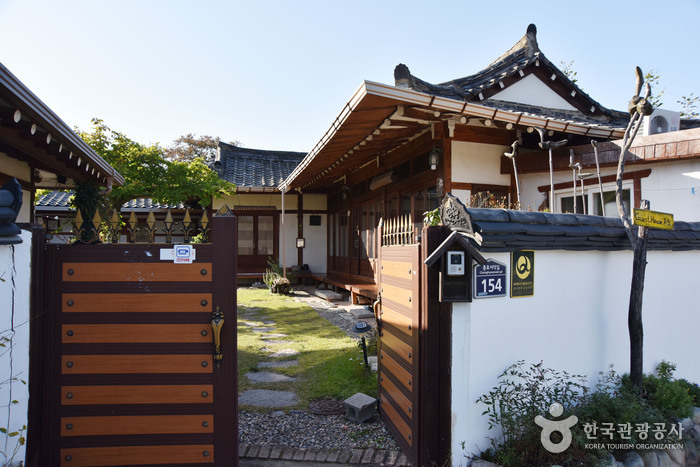
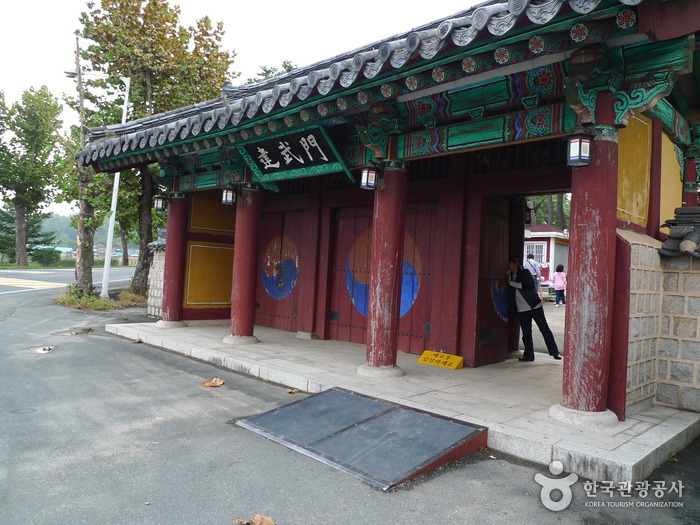
 Español
Español
 한국어
한국어 English
English 日本語
日本語 中文(简体)
中文(简体) Deutsch
Deutsch Français
Français Русский
Русский